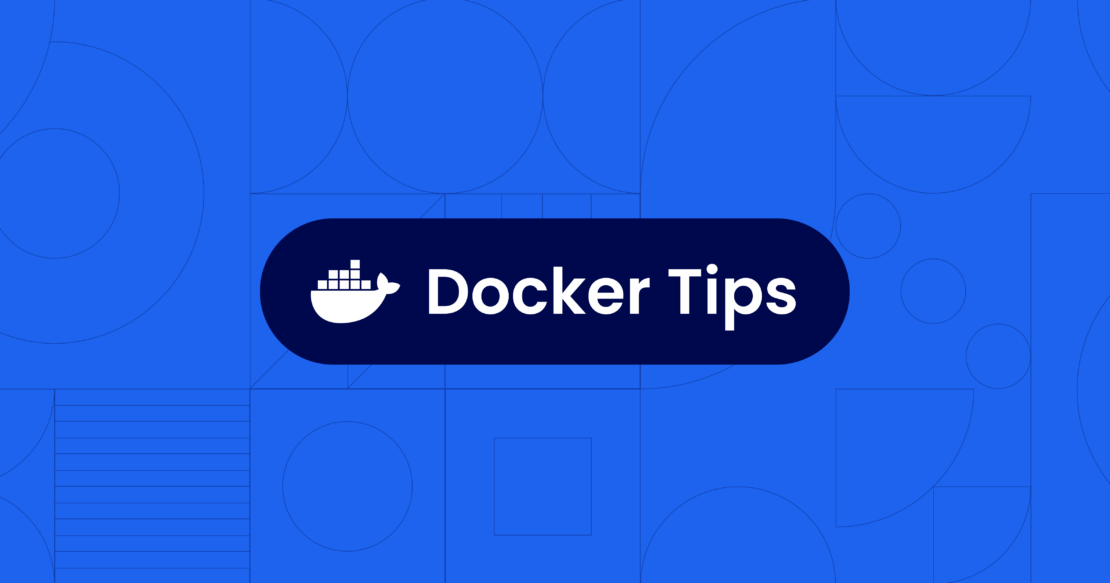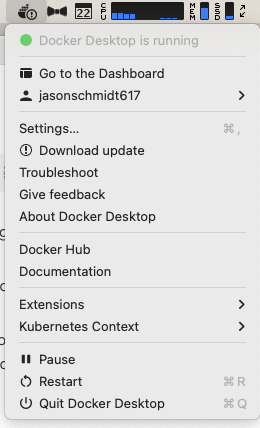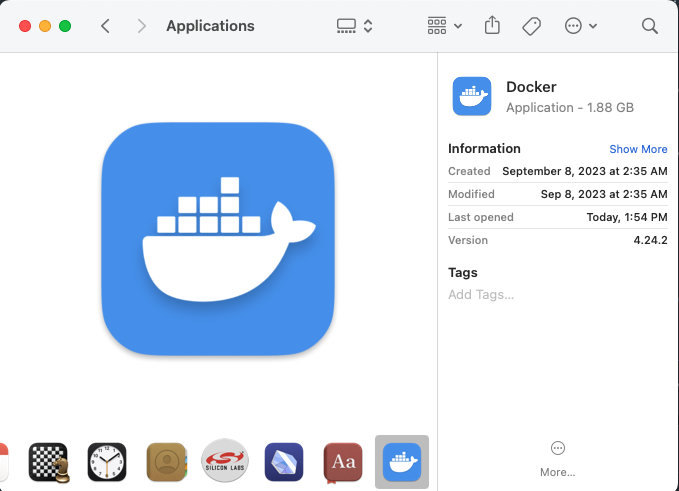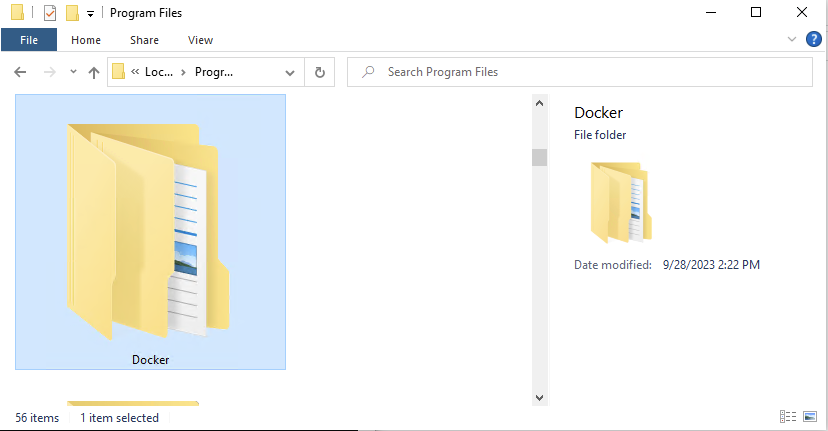Docker has become a leader in providing software development solutions, offering tooling that simplifies the process of developing, testing, deploying, and running applications using containers. As such, understanding Docker’s different products, like Docker Desktop, and components, like Docker Engine, and understanding how they work together is essential for developers looking to maximize their productivity and ensure compliance with Docker’s licensing terms.
This post will clarify the distinctions and similarities between Docker Desktop and Docker Engine, and provide guidance on verifying which one you are currently using so you can make the most out of your experience.
Read on to explore how to distinguish between Docker Desktop and Docker Engine installations, identify when additional Docker tools are in use, understand Docker contexts, and review your Docker usage to ensure it complies with the Docker Licensing Agreement.

Background
The word “Docker” has become synonymous with containerization to the degree that containerizing an application is increasingly referred to as “dockerizing” an application. Although Docker didn’t create containerization, the company was the first to bring this technology to the developer community in an easily understood set of tooling and artifacts.
In 2015, Docker took the next step and created the Open Container Initiative (OCI) to define and specify how to build a container image, how to run a container image, and how to share container images. By donating the OCI to the Linux Foundation, Docker provided a level playing field for any application of container technology.
An open source effort headed up by Docker is the Moby Project. Docker created this open framework to assemble specialized container systems without reinventing the wheel. It provides a building block set of dozens of standard components and a framework for assembling them into custom platforms.
Moby comprises several components, including a container engine, container runtime, networking, storage, and an orchestration system. Both the standalone free Docker Engine (also known Docker Community Edition or Docker CE) and the commercial Docker Desktop originated from the Moby Project. However, Docker Desktop has evolved beyond the Moby Project, with a full product team investing in the features and technology to support individual developers, small teams, and the requirements of large development teams.
Docker Engine vs. Docker Desktop
Docker Desktop is a commercial product sold and supported by Docker, Inc. It includes the Docker Engine and other open source components; proprietary components; and features like an intuitive GUI, synchronized file shares, access to cloud resources, debugging features, native host integration, governance, and security features that support ECI, air-gapped containers, and administrative settings management. To provide a consistent user experience across different operating systems, Docker Desktop uses the host systems’ native virtualization to run and manage a VM for the Docker Engine. This offers developers a turnkey solution for running a containerization toolset on any device or operating system. Users can leverage the Docker Engine at its core on any platform by downloading Docker Desktop.
Docker Engine is a component free to download individually, not as part of Docker Desktop, and runs as a standalone for free. It can run on any supported Linux distribution and includes the Docker CLI to run commands. Docker Engine will not run natively on Windows or macOS and does not come with a GUI or any of the advanced features provided by Docker Desktop.
How can I tell If I’m running Docker Desktop or just the Docker Engine?
You can determine if you’re using Docker Desktop or Docker Engine in a number of different ways. The following section provides guidance for checking from the filesystem and from within the Docker CLI tooling, which is a component in Docker Desktop as well.
1. GUI or icon
If you are using Docker Desktop, you will have either a windowed GUI or a menubar/taskbar icon of a whale (Figure 1).

2. Check for an installation
The easiest way to check for Docker Desktop is to look for the installation; this can be automated by scripting or the use of an MDM solution.
Note that the following instructions assume that Docker Desktop is installed in the default location, which may result in false negatives if other installation paths are used.
Docker Desktop on macOS
On macOS, the Docker Desktop application is installed under the /Applications directory and is named Docker (Figure 2).
$ ls -alt /Applications/Docker.app/
total 0
drwxrwxr-x 49 root admin 1568 Oct 13 09:54 ..
drwxr-xr-x@ 9 jschmidt admin 288 Sep 28 15:36 Contents
drwxr-xr-x@ 3 jschmidt admin 96 Sep 8 02:35 .

Docker Desktop on Windows
On Windows, the Docker Desktop application is installed under the C:\Program Files folder and is named Docker (Figure 3).
C:\Users\qdzlug>dir "c:\Program Files\Docker"
Volume in drive C has no label.
Volume Serial Number is DEFE-FC15
Directory of c:\Program Files\Docker
09/28/2023 02:22 PM <DIR> .
09/28/2023 02:22 PM <DIR> ..
09/28/2023 02:22 PM <DIR> cli-plugins
09/28/2023 02:21 PM <DIR> Docker
0 File(s) 0 bytes
4 Dir(s) 52,964,356,096 bytes free
C:\Users\qdzlug>

Docker Desktop on Linux
On Linux, the Docker Desktop application is installed under /opt/docker-desktop.
$ ls -lat /opt/docker-desktop/
total 208528
drwxr-xr-x 7 root root 4096 Sep 29 10:58 .
drwxr-xr-x 2 root root 4096 Sep 29 10:58 locales
drwxr-xr-x 5 root root 4096 Sep 29 10:58 resources
drwxr-xr-x 2 root root 4096 Sep 29 10:58 share
drwxr-xr-x 2 root root 4096 Sep 29 10:58 linuxkit
drwxr-xr-x 2 root root 4096 Sep 29 10:58 bin
drwxr-xr-x 7 root root 4096 Sep 29 10:57 ..
-rw-r--r-- 1 root root 5313018 Sep 27 12:10 resources.pak
-rw-r--r-- 1 root root 273328 Sep 27 12:10 snapshot_blob.bin
-rw-r--r-- 1 root root 588152 Sep 27 12:10 v8_context_snapshot.bin
-rw-r--r-- 1 root root 107 Sep 27 12:10 vk_swiftshader_icd.json
-rw-r--r-- 1 root root 127746 Sep 27 12:10 chrome_100_percent.pak
-rw-r--r-- 1 root root 179160 Sep 27 12:10 chrome_200_percent.pak
-rwxr-xr-x 1 root root 1254728 Sep 27 12:10 chrome_crashpad_handler
-rwxr-xr-x 1 root root 54256 Sep 27 12:10 chrome-sandbox
-rw-r--r-- 1 root root 398 Sep 27 12:10 componentsVersion.json
-rwxr-xr-x 1 root root 166000248 Sep 27 12:10 'Docker Desktop'
-rw-r--r-- 1 root root 10544880 Sep 27 12:10 icudtl.dat
-rwxr-xr-x 1 root root 252920 Sep 27 12:10 libEGL.so
-rwxr-xr-x 1 root root 2877248 Sep 27 12:10 libffmpeg.so
-rwxr-xr-x 1 root root 6633192 Sep 27 12:10 libGLESv2.so
-rwxr-xr-x 1 root root 4623704 Sep 27 12:10 libvk_swiftshader.so
-rwxr-xr-x 1 root root 6402632 Sep 27 12:10 libvulkan.so.1
-rw-r--r-- 1 root root 1096 Sep 27 12:10 LICENSE.electron.txt
-rw-r--r-- 1 root root 8328249 Sep 27 12:10 LICENSES.chromium.html
Note that the launch icon and location for Docker will depend on the Linux distribution being used.
3. Check a running installation
You can also check a running installation to determine which version of Docker is being used. To do this, you need to use the docker version command; the Server line will indicate the version being used.
Docker Desktop on macOS Arm64
The Server: Docker Desktop 4.24.0 (122432) line indicates using Docker Desktop.
$ docker version
Client:
Cloud integration: v1.0.35+desktop.5
Version: 24.0.6
API version: 1.43
Go version: go1.20.7
Git commit: ed223bc
Built: Mon Sep 4 12:28:49 2023
OS/Arch: darwin/arm64
Context: default
**Server: Docker Desktop 4.24.0 (122432)**
Engine:
Version: 24.0.6
API version: 1.43 (minimum version 1.12)
Go version: go1.20.7
Git commit: 1a79695
Built: Mon Sep 4 12:31:36 2023
OS/Arch: linux/arm64
Experimental: true
containerd:
Version: 1.6.22
GitCommit: 8165feabfdfe38c65b599c4993d227328c231fca
runc:
Version: 1.1.8
GitCommit: v1.1.8-0-g82f18fe
docker-init:
Version: 0.19.0
GitCommit: de40ad0
Docker Desktop on Windows
The Server: Docker Desktop 4.24.0 (122432) line indicates using Docker Desktop.
C:\Users\qdzlug>docker version
Client:
Cloud integration: v1.0.35+desktop.5
Version: 24.0.6
API version: 1.43
Go version: go1.20.7
Git commit: ed223bc
Built: Mon Sep 4 12:32:48 2023
OS/Arch: windows/amd64
Context: default
**Server: Docker Desktop 4.24.0 (122432)**
Engine:
Version: dev
API version: 1.44 (minimum version 1.12)
Go version: go1.20.8
Git commit: HEAD
Built: Tue Sep 26 11:52:32 2023
OS/Arch: linux/amd64
Experimental: false
containerd:
Version: 1.6.22
GitCommit: 8165feabfdfe38c65b599c4993d227328c231fca
runc:
Version: 1.1.8
GitCommit: v1.1.8-0-g82f18fe
docker-init:
Version: 0.19.0
GitCommit: de40ad0
C:\Users\qdzlug>
Docker Desktop on Linux
The Server: Docker Desktop 4.31.0 (153195) line indicates using Docker Desktop.
Client:
Version: 26.1.4
API version: 1.45
Go version: go1.22.3
Git commit: 5650f9b102
Built: Thu Jun 6 18:42:55 2024
OS/Arch: linux/amd64
Context: desktop-linux
Server: Docker Desktop 4.31.0 (153195)
Engine:
Version: 26.1.4
API version: 1.45 (minimum version 1.24)
Go version: go1.21.11
Git commit: de5c9cf
Built: Wed Jun 5 11:29:22 2024
OS/Arch: linux/amd64
Experimental: false
containerd:
Version: 1.6.33
GitCommit: d2d58213f83a351ca8f528a95fbd145f5654e957
runc:
Version: 1.1.12
GitCommit: v1.1.12-0-g51d5e94
docker-init:
Version: 0.19.0
GitCommit: de40ad0
Docker Engine on Linux
The Server: Docker Engine - Community line indicates using the community edition.
$ docker version
Client: Docker Engine - Community
Cloud integration: v1.0.35+desktop.5
Version: 24.0.6
API version: 1.43
Go version: go1.20.7
Git commit: ed223bc
Built: Mon Sep 4 12:31:44 2023
OS/Arch: linux/amd64
Context: default
**Server: Docker Engine - Community**
Engine:
Version: 24.0.6
API version: 1.43 (minimum version 1.12)
Go version: go1.20.7
Git commit: 1a79695
Built: Mon Sep 4 12:31:44 2023
OS/Arch: linux/amd64
Experimental: true
containerd:
Version: 1.6.24
GitCommit: 61f9fd88f79f081d64d6fa3bb1a0dc71ec870523
runc:
Version: 1.1.9
GitCommit: v1.1.9-0-gccaecfc
docker-init:
Version: 0.19.0
GitCommit: de40ad0
Docker contexts
Note that multiple contexts can be installed on a system; this is most often seen in Linux where Docker Desktop and Docker Engine are installed on the same host. To switch between the two, the docker context use command is used. When you are in a context, you communicate with the daemon for that context; thus, in a dual installation situation, you would be switching between the Docker Desktop install and the host install.
To view contexts, you use docker context ls, then switch via docker context use CONTEXTNAME. The following example shows a Linux system with both installed.
$ docker context ls
NAME TYPE DESCRIPTION DOCKER ENDPOINT KUBERNETES ENDPOINT ORCHESTRATOR
default * moby Current DOCKER_HOST based configuration unix:///var/run/docker.sock
desktop-linux moby Docker Desktop unix:///home/jschmidt/.docker/desktop/docker.sock
$ docker version
Client: Docker Engine - Community
Cloud integration: v1.0.35+desktop.5
Version: 24.0.6
API version: 1.43
Go version: go1.20.7
Git commit: ed223bc
Built: Mon Sep 4 12:31:44 2023
OS/Arch: linux/amd64
Context: default
Server: Docker Engine - Community
Engine:
Version: 24.0.6
API version: 1.43 (minimum version 1.12)
Go version: go1.20.7
Git commit: 1a79695
Built: Mon Sep 4 12:31:44 2023
OS/Arch: linux/amd64
Experimental: true
containerd:
Version: 1.6.24
GitCommit: 61f9fd88f79f081d64d6fa3bb1a0dc71ec870523
runc:
Version: 1.1.9
GitCommit: v1.1.9-0-gccaecfc
docker-init:
Version: 0.19.0
GitCommit: de40ad0
$ docker context use desktop-linux
desktop-linux
Current context is now "desktop-linux"
$ docker version
Client: Docker Engine - Community
Cloud integration: v1.0.35+desktop.5
Version: 24.0.6
API version: 1.43
Go version: go1.20.7
Git commit: ed223bc
Built: Mon Sep 4 12:31:44 2023
OS/Arch: linux/amd64
Context: desktop-linux
Server: Docker Desktop 4.24.0 (122432)
Engine:
Version: 24.0.6
API version: 1.43 (minimum version 1.12)
Go version: go1.20.7
Git commit: 1a79695
Built: Mon Sep 4 12:32:16 2023
OS/Arch: linux/amd64
Experimental: false
containerd:
Version: 1.6.22
GitCommit: 8165feabfdfe38c65b599c4993d227328c231fca
runc:
Version: 1.1.8
GitCommit: v1.1.8-0-g82f18fe
docker-init:
Version: 0.19.0
GitCommit: de40ad0
Other OCI tooling
Because both Docker Engine and Docker Desktop are OCI compliant, a number of solutions are presented and installed as “direct replacements” for Docker. This process usually involves creating helper aliases, scripts, or batch programs to emulate docker commands.
You can check for aliases by running the command alias docker to see if there is an alias in place. This holds true for Linux and macOS, or a Linux distribution inside WSL2 on Windows.
$ alias docker # Docker aliased to podman
docker='podman'
$ alias docker # No alias present
You can also list the docker binary from the CLI to ensure that it is the official Docker binary:
$ ls -l `which docker` # Docker supplied by Homebrew on the Mac
lrwxr-xr-x 1 jschmidt admin 34 Apr 2 12:03 /opt/homebrew/bin/docker -> ../Cellar/docker/26.0.0/bin/docker
$ ls -l `which docker` # Official Docker binary on the Mac
lrwxr-xr-x 1 root wheel 54 Jan 10 16:06 /usr/local/bin/docker -> /Applications/Docker.app/Contents/Resources/bin/docker
Conclusion
To wrap up our exploration, note that there are also several offerings generically referred to as “Docker” available to use as part of your containerization journey. This post focused on Docker Engine and Docker Desktop.
At this point, you should be comfortable distinguishing between a Docker Desktop installation and a Docker Engine installation and be able to identify when other OCI tooling is being used under the docker command name. You should also have a high-level understanding of Docker contexts as they relate to this topic. Finally, you should be able to review your usage against the Docker Licensing Agreement to ensure compliance or simply log in with your company credentials to get access to your procured entitlements..
Learn more
- Docker Engine
- Docker Desktop
- Docker Desktop Windows Install
- Docker Desktop Linux Install
- Docker Desktop Macintosh Install
- Subscribe to the Docker Newsletter.
- Get the latest release of Docker Desktop.
